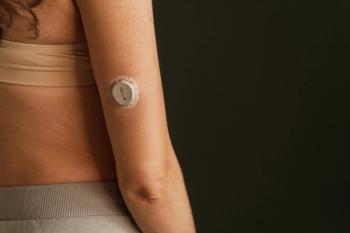
The Benefit of Pharmacist Intervention on Outcomes for Diabetes Patients
Pharmacists can have a positive influence on medication adherence and several other factors in type 2 diabetes.
A systemic review of randomized controlled trials discovered that pharmacist interventions can improve metabolic control, medication adherence, economic outcomes, and health-related quality of life (HRQoL) in patients with type 2 diabetes.
In 2015, it was estimated that diabetes affects 415 million people globally, and the prevalence is continuing to spike, and is predicted to increase by 642 million by 2040.
The review, published in the Journal of Managed Care and Specialty Pharmacy, noted that more than 50% of type 2 diabetes patients do not follow the recommended lifestyle changes or do not take the prescribed medication.
Part of these low levels of adherence can be attributed to medication side effects, complex treatment regimens, psychiatric disorders, memory impairment, poor patient-provider communication, and patient financial resources and beliefs, the study found.
Since pharmacists are able to build strong relationships with their patients and are a reliable source of information, they are in an ideal position to provide education, monitor and promote adherence to self-care and therapy regimens.
The American Diabetes Association recommends that a collaborative and integrated team approach should be used for the management of diabetes patients.
In order to evaluate the efficacy of any pharmacist intervention directed at type 2 diabetes patients, researchers searched 3 electronic databases: PubMed, Cochrane Central Register or Controlled Trials, and Web of Science from inception in January 2015.
The studies used in the review included 1 or more outcomes: glycosylated hemoglobin (A1c), blood glucose, blood pressure, lipid profile, body mass index (BMI), 10-year coronary heart disease (CHD) risk, medication adherence, health-related quality of life (HRQoL), and economic outcomes.
Two reviewers independently assessed the risk of bias among the studies included using the Cochrane risk of bias tool.
In total, there were 36 studies included in the systematic review involving a total of 5761 participants. The studies evaluated the effects of pharmacist interventions that occurred in numerous countries and health care facilities. The amount of studies that reported each outcome of interest varied.
A1c was an outcome measure in 26 studies and the mean value decreased in the intervention group during the follow-up period in each of the studies. Twenty-four studies reported a greater reduction in this outcome in the intervention group compared with the control group.
The difference between the intervention group and control group in the A1c change from baseline to the final follow-up ranged from -0.18% to -2.1%.
During the course of the research, 18 of the studies evaluated the change in systolic blood pressure and each of them had a reduction in mean systolic blood pressure in the intervention group from baseline to the final follow-up.
Additionally, 17 studies had a greater improvement in this outcome in the intervention group compared with the control. The difference in change between groups ranged from -3.3 mmHg and -23.05 mmHg.
For diastolic blood pressure, 14 out of 15 studies saw a greater effect in the intervention group and the difference in change was between -0.21 mmHg and -9.1 mmHg.
Total cholesterol was described as an outcome measure in 13 studies, 10 of which reported a greater improvement in this outcome in the intervention group. The difference in change between the 2 groups ranged from (+18.95 mg dL-1 to -32.48 mg dL-1) and was reported as statistically significant in only 3 of the studies.
Low-density lipoprotein (LDL) cholesterol had a greater reduction of this in the intervention group in 12 out of 15 studies, and had a difference in change between groups ranging from +7.35 mg dL-1 and -30 mg dL-1.
High-density lipoprotein (HDL) cholesterol had similarly favorable data in the intervention group in 9 out of 12 studies, with a difference in change between groups from -5.8 mg dL-1 to +11 mg dL-1.
Finally, there were 12 studies that reported data on triglycerides, of which 9 reported a greater reduction in this outcome in the intervention group compared with the control group. The difference in change between the 2 groups was reported as statistically significant in only 2 studies, with the difference ranging from +12 mg dL-1 and -62 mg dL-1.
A beneficial effect on body mass index was found in the intervention group in 12 out of 14 studies. In all, 6 studies that estimated the 10-year CHD risk in patients found a greater improvement in the intervention group versus the control group.
A positive impact was also found in pharmacist interventions on medication adherence and HRQoL in majority of the studies.
In regards to economic outcomes, only 3 studies conducted a cost-effectiveness analysis, still, pharmacist interventions were found to be cost-effective.
As seen by the reduction in A1c, BMI, blood pressure, and blood glucose, as well as the improvement in the lipid profile in the intervention group, the findings suggest that pharmacist interventions directed at the management of patients with type 2 diabetes can have a positive impact on clinical outcomes.
Newsletter
Stay informed on drug updates, treatment guidelines, and pharmacy practice trends—subscribe to Pharmacy Times for weekly clinical insights.



















































































































































































































